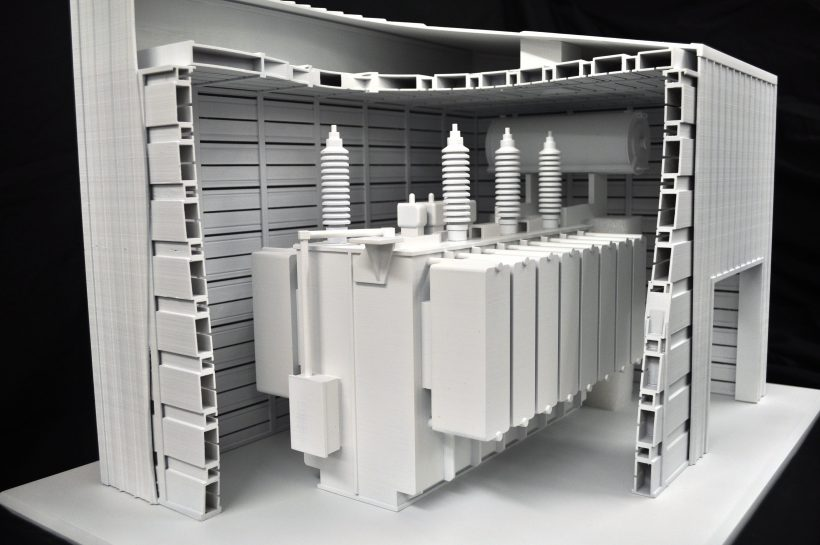
Since its emergence in the mid-1980s, Selective Laser Sintering (SLS) has become one of the most widely used and versatile additive manufacturing technologies. SLS provides a host of benefits — not least because highly durable, lightweight parts can be produced in a matter of hours — and is used in a range of applications, from low-volume production to rapid prototyping.
In this tutorial, we’ll take a closer look at how SLS works, its applications and how you can get the most out of the technology – and you can download our free SLS white paper for more tools on how to optimise your printing processes for SLS.
How does SLS work?
Selective Laser Sintering uses a high-powered laser to melt layers of powder and create 3D-printed parts.
1. Once the powder has been preheated by the printing bed, the laser heats it close to its melting point, causing the particles of powdered material to fuse together.
2. The laser then traces the outline of the model on the powder bed to create a solid layer – once this is complete, the printing bed drops and a new layer of powder is added.
3. This process is repeated, layer after layer, until the the completed part is created.
4. Once the part has been left to cool, the parts can be unpacked and removed from the printing bed before they are cleaned and optional finishing processes are applied.
Why choose SLS?
One of the key benefits of SLS is that it does not require any support structures, as the part is supported by the unsintered powder left over from the printing process. SLS is therefore ideal for creating large and complex parts, geometries and lattice structures – and can significantly reduce production times.
As one of the fastest AM technologies, SLS offers the possibility of printing multiple parts at once, which not only maximises build space, but also results in great time savings.
Parts produced with SLS possess impressive mechanical properties, and are noted for their durability, flexibility, high detail and thermal stability. So if you want to create durable plastic products, for example, SLS is the ideal solution.
SLS is also distinct from other additive manufacturing methods in that a great variety of materials, including nylon, polystyrene, metals (steel, titanium, composites) and sand mixtures, can be used.
What are the applications of SLS?
While SLS originally emerged as a tool for rapid prototyping, the scope of its applications has radically expanded. Ideal for small to medium volume production, SLS now provides a whole range of production opportunities, including:
– Jigs and fixtures
– Aerospace parts
– Medical products
– Machine components
SLS has proved particularly useful for industries such as aerospace and automotive, where printing a small volume of high-quality parts is required. Real-life examples include airline Emirates, who last year announced its use of SLS technology to produce parts for its aircraft cabins, and car manufacturer Porsche, which is using SLS to produce spare parts for its classic vehicles. Furthermore, as SLS can be used to create highly personalised products, it has also found its place in the healthcare industry, providing hearing aids, medical implants, prosthetics and other devices.
Things to watch out for
While SLS parts do not typically require extensive post-processing, it is important to note that they can frequently be porous or have a rough surface, which may require additional finishing processes if you want a smooth surface finish. Thermal distortion can also cause shrinking and warping of manufactured parts as each layer cools, so consider incorporating internal ribbing into your design to minimise the risk of warping.